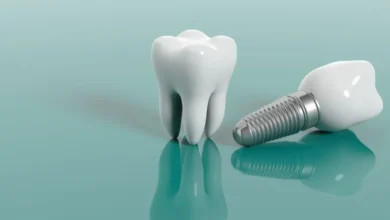Decoding the Relationship Between Vaping and Cancer Risks

Contents
- 1 Key Takeaways:
- 2 Vaping: An Overview of Use and Popularity
- 3 The Science Behind Vaping and Health
- 4 Analyzing Carcinogenic Substances in Vape Products
- 5 Research Findings: Vaping’s Link to Cancer
- 6 Comparative Risks: Vaping vs. Traditional Smoking
- 7 Public Health Opinions on the Rise of Vaping
- 8 Preventive Measures and User Education
- 9 Next Steps: How to Stay Informed
Key Takeaways:
- Understanding the current research on vaping and cancer.
- Comparing traditional smoking risks with vaping.
- Exploring potential carcinogens in vaping products.
- Discussing public health perspectives on vaping.
- Highlighting the importance of awareness and education.
Explore the intricate correlation between vaping and cancer risks. Delve into ongoing research and debates surrounding the long-term health effects of vaping. Assess the potential carcinogenicity of e-cigarette ingredients and their impact on lung health. Navigate the complexities of vaping’s association with cancer with evidence-based understanding and critical analysis.
Vaping: An Overview of Use and Popularity
The rise of vaping has sparked a cultural transformation, positioning e-cigarettes as substitutes for traditional tobacco products. With their appealing design and array of flavors, these devices have garnered a diverse following, from smokers seeking cessation aids to youths drawn to their novelty and perceived safety. However, this surge in vaping has ignited fervent public health discussions, particularly concerning its potential long-term repercussions. As non-smokers, including adolescents, embrace vaping, debates intensify over its health impact. Regarding the question, can you get cancer from vaping, ongoing inquiries aim to unravel vaping’s carcinogenic potential, highlighting the urgency of understanding its health implications amidst its escalating popularity and evolving regulatory landscape.
The Science Behind Vaping and Health
Scientific inquiry into the health implications of vaping suggests a complex picture. The core principle behind vaping—the heating of a liquid to create an aerosol that is inhaled—means that the vapors contain far fewer of the combustion-related toxins found in traditional tobacco smoke. Yet, the inhalation of these aerosols carries inherent risks due to nicotine and other additives. Nicotine is a highly addictive substance with known harmful effects, and the different chemical constituents in vape liquid are becoming subjects of scrutiny as they have the potential to harm respiratory health and systemic functions over time.
Analyzing Carcinogenic Substances in Vape Products
The notion that vape products may contain carcinogenic substances is alarming, especially when considering the appeal of these products among younger demographics. Various substances that could potentially cause cancer have been identified in the contents of certain vape liquids. In addition to propylene glycol, some flavoring agents used in vape juices are toxic when inhaled, and traces of heavy metals like nickel and lead have also been detected in some vaporizer components. While these contents are present in lower quantities compared to cigarette smoke, the health risks they signify, particularly with long-term usage, are a matter of concern and are actively being studied by experts in the field. Reports from reputable organizations such as the American Cancer Society have urged caution, noting the potential dangers and the need for ongoing research to understand the full health impact.
Research Findings: Vaping’s Link to Cancer
The relationship between vaping and cancer is an evolving area of research. Although numerous studies have delved into this topic, with some suggesting that certain chemicals in e-cigarettes may damage DNA, the conclusions remain tentative. Compared to the extensive literature on tobacco and cancer, the study of vaping is relatively in its infancy. The potential for carcinogenesis is a central concern, and ongoing studies need to clarify the magnitude of the risk. One can refer to resources such as Medical News Today, which aggregates current research and findings for up-to-date information.
Comparative Risks: Vaping vs. Traditional Smoking
Most people agree that regular cigarettes are nasty for your health and that they increase your chance of heart disease, lung cancer, and several other ailments. The comparative risks of vaping are less dire in the immediate term, according to current knowledge, but the practice is not without its hazards. The misconception that vaping is ‘safe’ could potentially lead non-smokers to adopt a habit that introduces unnecessary risks to their health. While the absence of tobacco and combustion in vaping implies a reduced risk, the presence of nicotine and other chemicals draws concern, with health professionals emphasizing vaping as a harm-reduction tool rather than an innocuous activity.
Public Health Opinions on the Rise of Vaping
The public health landscape is carefully watching the rise in vaping, especially among younger people. Prominent agencies like the Food and Drug Administration and the World Health Organization monitor data and research to inform regulatory and policy choices. These bodies and other health experts broadly agree on discouraging vaping among non-smokers. In particular, the flavoring options that tend to appeal to a younger audience and the marketing of vaping devices to minors have been contentious topics. This underscores the need for regulatory ways to address the public health risks related to these products.
Preventive Measures and User Education
Preventive measures and user education are crucial to navigating the challenges posed by the vaping trend. Both government and non-profit organizations have initiated campaigns to educate the public about the risks of vaping, with particular attention given to dissuading young people from starting. For current smokers, educational programs that convey the potential advantages and risks of switching to vaping—as a less harmful alternative—are invaluable. Through such efforts, along with the continued dissemination of research outcomes, society can better understand the implications of vaping and make choices that prioritize health and well-being.
Next Steps: How to Stay Informed
The story of vaping and its health implications is continually being written, with new findings emerging. For individuals who vape, those considering vaping, and the public at large, it’s vital to stay informed through trusted and credible channels. This includes following updates from health authorities, monitoring peer-reviewed medical studies, and reviewing literature from recognized organizations dedicated to public health. As the body of research increases, people will have the knowledge needed to make educated decisions about vaping and its potential long-term health effects.



